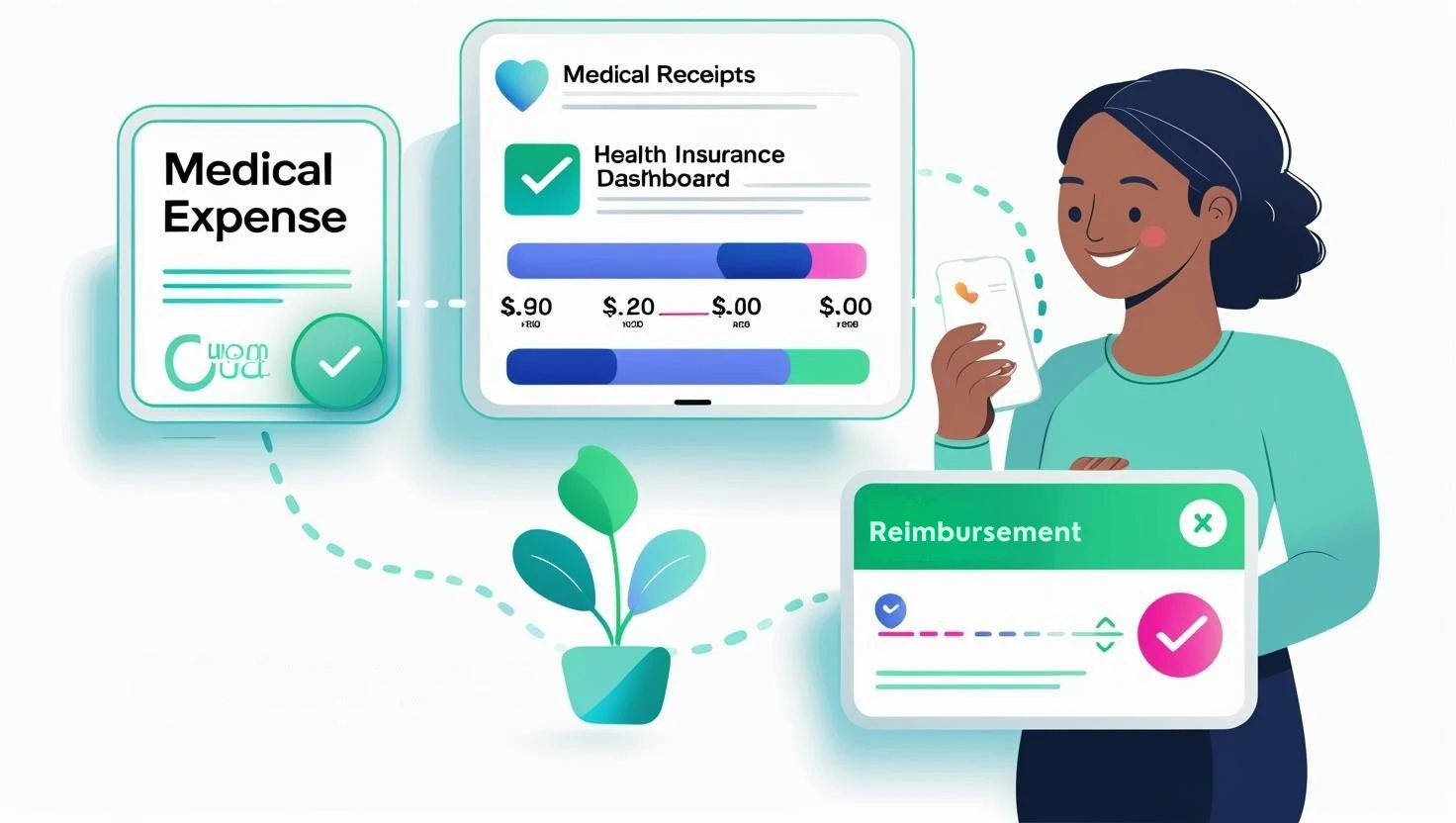The Lively Blog
SIGN UP FOR OUR
Newsletter
Stay up to date on the latest news delivered straight to your inbox
Lively’s Claim Sync Makes HSA Reimbursements Effortless
Lauren Hargrave · July 22, 2025 · 6 min read

Once a company decides to offer a stellar benefits package to its employees and gets them to sign up, it may seem like the hard part is over. But if those benefits are underutilized—or worse, unused—the company’s investment can quickly lose value. Low benefit utilization not only diminishes return on investment but can also lead to lower productivity, dissatisfaction with compensation, and higher turnover rates.
Health Savings Accounts (HSAs) are a valuable tool for promoting both physical and financial wellness. One key to maximizing HSA effectiveness is simplifying the reimbursement process for qualified expenses. That’s where Lively’s new Claim Sync feature comes in. It removes friction from HSA reimbursements, empowering employees to fully leverage their accounts while reducing administrative burden for employers.
What is an HSA Reimbursement?
An HSA reimbursement occurs when an account holder pays out-of-pocket for a qualified medical expense—using a personal debit, credit card, or cash—and later reimburses themselves from their HSA. While straightforward in theory, the process often involves multiple steps and documentation, including itemized receipts and explanations of benefits (EOBs) from insurers.
Different HSA administrators have varying rules for what qualifies as proper documentation. For example, some require receipts to specify the nature of the medical service or the name of the prescription drug to verify eligibility. If documentation is missing or unclear, reimbursements may be denied, or worse, subject to penalties in an audit.
Common HSA Reimbursement Methods
There are several ways to access health saving account funds after incurring a qualified expense:
Online Submission: Many HSA administrators offer online portals where account holders can upload receipts and request reimbursements. This method creates a digital trail, simplifying audits and record keeping.
Bank Transfer: Account holders can manually transfer money from their health savings account to their checking or savings account. However, this method requires careful documentation to prove the expense was eligible.
ATM Withdrawal: Although convenient, withdrawing HSA funds from an ATM increases the risk of non-compliance if documentation is lost or forgotten. Plus, ATM limits can complicate reimbursements for non-round amounts (e.g., $213.13), prompting over-withdrawals and potential tax penalties.
Each method has pros and cons, but all require vigilance from employees to maintain compliance with IRS rules.
What is Needed for a Reimbursement?
Reimbursement documentation can vary, but typically includes:
Itemized Receipts: Must clearly show the service or product purchased, including dates and provider information.
Explanation of Benefits (EOBs): Useful for confirming that a procedure was not covered by insurance or to clarify remaining out-of-pocket responsibility.
Prescriptions: Needed for over-the-counter medication purchases or medical devices that require a doctor’s order.
Maintaining organized records not only facilitates reimbursement but ensures compliance in the event of an IRS audit.
Why an Easy Reimbursement Process Matters for Employees
If using an HSA feels complicated, employees are less likely to engage with the benefit. That results in missed opportunities to manage medical costs and grow long-term savings. A seamless reimbursement process boosts confidence, encourages participation, and supports employee financial health.
Situations Requiring Reimbursement:
These situations are common, and without an easy way to submit and track reimbursements, employees may miss out on using their HSA funds effectively and risk paying out of pocket for expenses that could have been covered.
Card Not Available: A spouse or dependent uses the HSA card, or the employee forgets to bring it.
Lost or Replaced Cards: Waiting for a replacement can delay transactions.
Unexpected Expenses: Medical emergencies or last-minute pharmacy trips may lead to personal card use.
Without easy reimbursement, these events turn into missed savings or compliance risks.
What Happens When Reimbursement is Too Complicated?
When employees face hurdles in reimbursement, they often make avoidable mistakes:
Reimbursing for Ineligible Expenses: This triggers penalties—income tax and a 20% penalty.
Missing Out on Reimbursement: Employees may absorb costs unnecessarily, adding to financial stress.
Reduced HSA Participation: Complexity erodes confidence, reducing long-term savings and financial engagement.
A streamlined system ensures HSAs serve their purpose—supporting employees' short- and long-term health care expenses.
Why an Easy Reimbursement Process Matters for Employers
Employers benefit immensely when employees fully utilize their benefits:
Higher Satisfaction and Retention: When benefits are easy to use, employees feel supported, increasing loyalty and job satisfaction.
Lower Turnover: Nearly 30% of compensation is tied to benefits. If employees don’t understand or use them, they’re more likely to leave.
Improved Productivity: Financial stress impacts focus and performance. Making HSAs easier to manage reduces that burden.
Stronger Culture: When employees thrive, morale improves, and company culture strengthens.
Reduced HR Workload: Fewer questions, fewer errors, and less manual work for the people team.
How Lively’s Claim Sync Solves the Reimbursement Problem
Claim Sync empowers employees to fully utilize their HSA by automatically integrating insurance claims data with their Lively dashboard. This reduces manual entry, clarifies eligibility, and simplifies documentation—all while ensuring compliance.
How Claim Sync Works
Instead of managing multiple portals, receipts, and forms, Claim Sync brings everything into one connected experience. It pulls in claims data, organizes it in a single dashboard, and uses that information to pre-fill reimbursement requests. This helps employees save time while reducing the likelihood of errors.
Secure Integration: Claim Sync connects directly with employees’ health insurance plans.
Unified Dashboard: Claims, receipts, upcoming medical bills, and HSA balances appear in one place.
Pre-Populated Forms: Reimbursement forms are auto-filled using claim data, reducing time and effort.
Progress Tracking: Employees can see deductible progress, upcoming expenses, and savings needs—all in one view.
Claim Sync also enhances Lively’s Expense Scout, which flags eligible expenses from linked accounts, making reimbursement nearly effortless.
Benefits of Lively’s Claim Sync
By simplifying every step of the reimbursement process, Claim Sync drives better outcomes for both employees and employers. For employees, it means less stress, more timely reimbursements, and a clear understanding of their medical expenses. For employers, it encourages engagement with HSAs and removes friction from benefit administration.
Free for Employers: Available at no added cost during implementation.
Faster Reimbursements: Automated pre-filled forms speed up submissions and reduce errors.
Better Expense Management: Helps employees track claims and receipts, improving organization.
Smarter Savings: With visibility into bills and deductibles, employees make more informed HSA contributions.
Reduced Interest Charges: Quicker reimbursements help avoid credit card debt on medical bills.
Together, these benefits make Claim Sync a powerful tool for improving how employees interact with their HSAs—removing barriers, saving time, and creating a more seamless, stress-free benefits experience.
Get Started with Lively
Lively is your partner in building a modern, effective benefits package. Our tools—including Claim Sync, Expense Scout, and our intuitive HSA platform—remove barriers to engagement and help your team get the most from their benefits.
If you’re ready to offer a more impactful and effortless HSA experience, contact our team today.

Benefits
2025 and 2026 Maximum HSA Contribution Limits
Lively · June 20, 2025 · 3 min read
On May 1, 2025, the IRS announced the HSA contribution limits for 2026: $4,400 for individual coverage and $8,750 for family coverage. That’s a $100–$200 increase from the 2025 limits, which are $4,300 and $8,550 respectively. If you’re 55 or older, you can still contribute an extra $1,000.

Benefits
What is the Difference Between a Flexible Spending Account and a Health Savings Account?
Lauren Hargrave · February 9, 2024 · 12 min read
A Health Savings Account (HSA) and Healthcare Flexible Spending Account (FSA) provide up to 30% savings on out-of-pocket healthcare expenses. That’s good news. Except you can’t contribute to an HSA and Healthcare FSA at the same time. So what if your employer offers both benefits? How do you choose which account type is best for you? Let’s explore the advantages of each to help you decide which wins in HSA vs FSA.

Health Savings Accounts
Ways Health Savings Account Matching Benefits Employers
Lauren Hargrave · October 13, 2023 · 7 min read
Employers need employees to adopt and engage with their benefits and one way to encourage employees to adopt and contribute to (i.e. engage with) an HSA, is for employers to match employees’ contributions.
SIGN UP FOR OUR
Newsletter
Stay up to date on the latest news delivered straight to your inbox
